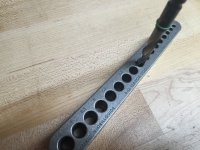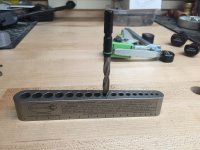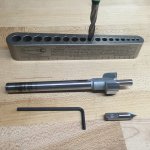Hi,
I'm drilling some holes for a bench vise in hard wood. What is the best way to use these bits so the wood doesn't start smoking or the bit get super hot? Are these best used at slow speeds, with minimum pressure on the drill?
Also, lacking a home drill press, is there a good way to get perpendicular holes with a hand drill?
Thanks.
I'm drilling some holes for a bench vise in hard wood. What is the best way to use these bits so the wood doesn't start smoking or the bit get super hot? Are these best used at slow speeds, with minimum pressure on the drill?
Also, lacking a home drill press, is there a good way to get perpendicular holes with a hand drill?
Thanks.



